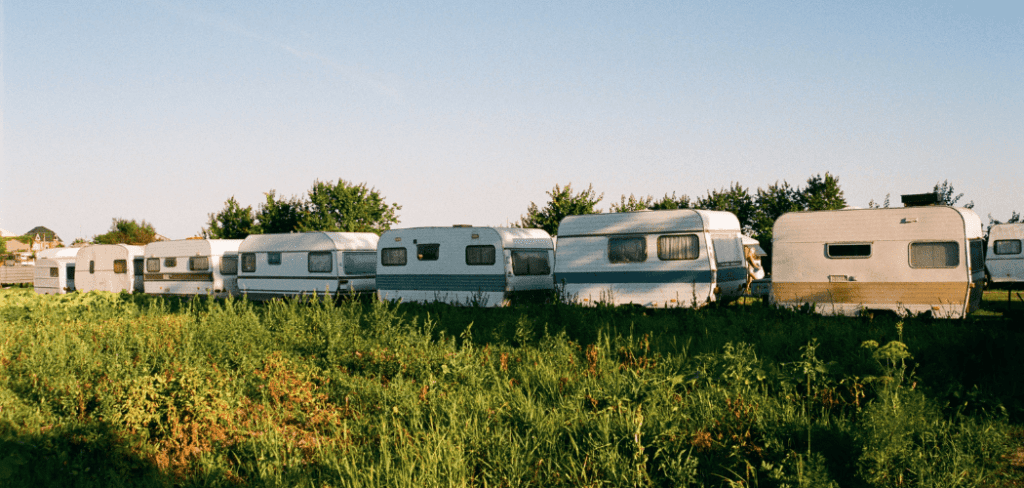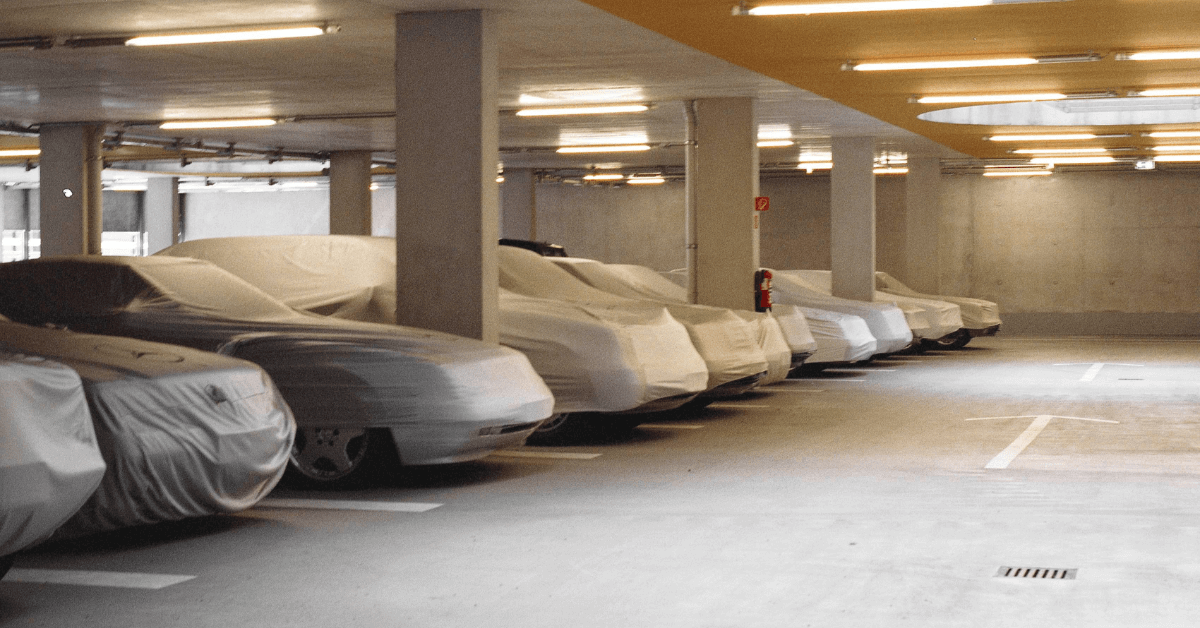RV covers are a popular solution for protecting recreational vehicles from the elements, such as rain, snow, and UV rays. Unfortunately, while they can be a helpful tool for preserving the condition of your RV, some people have concerns that using an RV cover could actually cause damage to their vehicle.
So, what’s the truth? Do RV covers cause damage, or are they a safe and effective way to protect your investment? Below, we’ll explore the controversy surrounding RV covers and examine the benefits and potential drawbacks of using them. We’ll also discuss the different types of RV covers available, the factors to consider when choosing one, and best practices for using and maintaining them.
By the end , you’ll have a better understanding of whether an RV cover is the right choice for you and how to avoid any potential damage to your vehicle. So, let’s dive in!
The Benefits of RV Covers
RV covers have become a popular choice for owners looking to protect their vehicles from the elements. Here are some of the benefits of using an RV cover:
1. Protection from the elements
One of the primary benefits of using an RV cover is protection from the elements. Sun, wind, rain, and snow can all cause damage to your vehicle over time. An RV cover provides a barrier against these elements, preventing damage and keeping your RV looking like new.
2. UV protection
UV rays from the sun can cause fading, cracking, and other types of damage to your RV’s paint, plastic, and rubber parts. An RV cover can block these harmful rays and help to preserve your RV’s exterior.
3. Reduced cleaning and maintenance
When your RV is exposed to the elements, it’s more likely to accumulate dirt, debris, and other grime that can be difficult to clean. By using an RV cover, you can reduce the frequency and intensity of cleaning required to keep your vehicle looking its best.
4. Protection from animals and insects
When parked outside, your RV can become a target for animals and insects, such as birds, squirrels, and bees. An RV cover can help to deter these pests and prevent them from damaging your vehicle.
5. Protection from scratches and dings
When parked outside, your RV is also at risk of getting scratched or dinged by nearby objects or other vehicles. An RV cover provides a layer of protection against these accidental collisions.
Related: Should I Wash My RV Before Covering It?
The Downsides of RV Covers
While there are many benefits to using an RV cover, there are also some potential downsides to keep in mind.
While RV covers themselves are not inherently damaging, certain factors such as low-quality covers or improper use can result in damage to your RV. It’s crucial to choose a high-quality cover that is appropriate for your specific needs and take steps to properly use and maintain it to avoid any potential harm to your vehicle.
Here are a few of the most common concerns about RV covers:
1. Abrasion damage
One of the main concerns with RV covers is the potential for abrasion damage. When an RV cover rubs against your vehicle’s exterior, it can cause scratches and other types of damage. This is particularly true if the cover is not properly fitted or secured.
2. Moisture buildup
Another potential issue with RV covers is moisture buildup. When an RV cover is in place, it can trap moisture underneath, leading to mold, mildew, and other types of damage. This is especially true if the cover is not breathable or does not allow for proper ventilation.
3. Wind damage
In some cases, RV covers can actually cause damage in windy conditions. If a cover is not properly secured, it can flap against the vehicle, causing scratches and other types of damage. In extreme cases, it may even be blown off completely, leaving the RV exposed to the elements.
4. Difficulty of use
Finally, some people find RV covers difficult or inconvenient to use. Depending on the type of cover you choose, it may be heavy, bulky, or require a lot of effort to install and remove. This can be especially challenging for older or less mobile RV owners.
While these concerns are valid, it’s important to keep in mind that many of them can be addressed with proper use and maintenance of your RV cover.
In the next section, we’ll take a closer look at the different types of RV covers available and how to choose the right one for your needs.
Factors to Consider Before Purchasing an RV Cover

If you’re considering purchasing an RV cover, it’s important to take some time to think about your specific needs and requirements. Here are some factors to consider before making your purchase:
1. Size and fit
One of the most important factors to consider when choosing an RV cover is size and fit. You’ll want to make sure that the cover you choose fits your RV properly, with enough room for any added accessories or features.
2. Material
The material of the RV cover is another important consideration. Different materials offer different levels of protection, breathability, and durability. For example, a heavy-duty vinyl cover may offer the most protection from the elements, but it may also be more difficult to install and remove.
3. Weather conditions
The weather conditions in your area should also be taken into account when choosing an RV cover. If you live in an area with heavy snow or rainfall, for example, you may want to choose a cover that is designed to handle these conditions.
4. Ease of use
As mentioned earlier, some RV covers can be difficult or inconvenient to use. If you plan on using your RV frequently, you’ll want to choose a cover that is easy to install and remove.
5. Price
Finally, price is always a consideration when making a purchase. While it may be tempting to go for the cheapest option, keep in mind that a higher-priced RV cover may offer better quality and durability in the long run.
Signs of Damage Caused by an RV Cover
While an RV cover can provide valuable protection for your vehicle, it’s important to keep an eye out for signs of damage that may be caused by the cover itself. Here are some common signs to watch for:
1. Abrasion marks
As mentioned earlier, abrasion damage is a common concern with RV covers. If you notice any scratches, scuffs, or other marks on your RV’s exterior, it may be a sign that the cover is rubbing against the vehicle.
2. Mold or mildew
If your RV cover is not breathable or does not allow for proper ventilation, it can trap moisture underneath, leading to mold, mildew, and other types of damage. If you notice a musty smell or see any signs of mold or mildew on your RV’s interior or exterior, it may be a sign that your cover is not allowing for proper airflow.
3. Staining or discoloration
Over time, an RV cover can cause staining or discoloration on your RV’s exterior. This can happen if the cover is not properly cleaned or if it is made from a material that is not UV resistant.
4. Tears or holes
If your RV cover is not properly secured or is made from a less durable material, it may be prone to tearing or developing holes. If you notice any tears or holes in your cover, it’s important to address the issue as soon as possible to prevent further damage.
5. Flapping or movement
If your RV cover is not properly secured, it may flap or move in windy conditions. This can not only cause damage to your RV’s exterior, but it can also result in the cover becoming loose or coming off entirely.
By keeping an eye out for these signs of damage, you can address any issues with your RV cover before they cause serious damage to your vehicle.
Conclusion – Do RV Covers Cause Damage?
RV covers themselves do not cause damage to RVs, but improper use or low-quality covers can lead to damage. It’s important to carefully consider the type of cover you choose, use it properly, and maintain it regularly to prevent any potential damage to your RV.
Before purchasing an RV cover, make sure to consider factors such as the climate you’ll be using it in, the type of material it’s made from, and how it will be secured to your vehicle. By taking these factors into account, you can choose a cover that will provide the protection you need without causing unnecessary damage to your RV.
Once you’ve chosen a cover, make sure to use it properly and maintain it regularly. This includes ensuring that it’s properly secured, keeping it clean and free of debris, and regularly checking for signs of damage.
